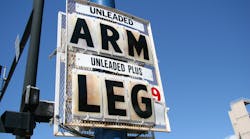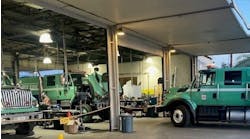When last we visited in this space, we said that our outlook for the economy in 2022 and beyond would hinge on the resolution of four factors, all of which start with the letter “S.” Those were shots, schools, saloons, and supply.
Shots referred to the public health issues caused by the pandemic. And, as of the middle of 2022, those issues have largely been addressed through the vaccination program, the development of herd immunity, and a better understanding of the disease. While we can’t say that the problem has been solved, we can say that it does not present the same obstacles we faced a year ago.
Schools referred to the problems associated with the quarantine and subsequent reopening of the economy. It had to do both with how and when the schools were open and the effects of their not being open on the workforce. Again, we appear to have wrestled this problem to the ground. While the solutions are still evolving, we no longer have to contend with the same degree of impairment we had as recently as the end of 2021.
Saloons referred to the effects of the pandemic on the leisure and entertainment sector of the economy. At the time of the outbreak, the leisure and entertainment sector was the largest category of total payroll employment. This sector also took the heaviest hit and has taken the longest to recover. Indeed, as of April 2022, employment here was still below where it had been in February 2020, with hiring at hotels and restaurants still lagging behind their pre-pandemic levels. What has happened in this sector best embodies the structural changes that have taken place across the economy, affecting the supply of, the demand for, and the price of labor.
The last element was supply—and this was the supply chains. Yes, chains. There is one for goods, which gets all the press because pictures can be taken of the stacked-up containers, and there is one for labor, which is harder to show. Both were severely disrupted, and both are still being restored. And, most importantly, the effects of those disruptions are driving what is now the principal economic problem we face: inflation.
Inflation is defined as a widespread and long-lasting rise in the level of prices. Because prices are the most important signals in a market economy, it is crucial to understand how and why prices are changing so as to be able to understand the signal they are sending.
The most widely used measure of inflation is the year-over-year percent change in the All Items Consumer Price Index (CPI). This statistic, which goes back to 1914, is compiled and published monthly by the U.S. Bureau of Labor Statistics. It is based on a basket of goods and services we all consume and seeks to measure the cost of living. Think of it as the nation’s shopping cart. The number it produces is the aggregate inflation rate, which, not surprisingly, will not match our individual inflation rates, because your shopping cart and my shopping cart don’t have the same things in them. But your shopping cart and my shopping cart are part of the nation’s shopping cart.
The rise in the inflation rate from 0.2% in May 2020 to 8.2% in April 2022 was primarily driven by disruptions to the supply chain for goods. Of special note was the rise in the price of gasoline from $1.87/gallon the week of April 27, 2020, to $4.43/gallon the week of May 9, 2022. That rise reflects both the resumption of driving and the movement of goods following the reopening of the economy together with the rise in the price of crude oil associated with the higher demand for fuel.
This process is being repeated across the economy, with higher demand meeting constrained supply. The result is higher prices. The question now is how much longer will this dynamic persist?
The answer will be determined by how quickly we remove the remaining supply constraints, and by how much demand is curtailed by both the higher prices themselves and the actions of the Federal Reserve to slow aggregate economic activity. We expect some unpleasantness to ensue.
For businesses buffeted by the cross currents of inflation, the first priority is to secure the supply chains. For labor, this requires taking steps to retain and, if possible, recruit the people needed to generate the revenues that will sustain the business. For materials and equipment, this requires special attention to the price and availability of the items needed to generate the revenues that will sustain the business.
Weathering the inflation storm requires active responses to the price signals coming from all the markets you are a part of. The main question for fleets is what should be changed to adjust for these higher prices without compromising fleet efficiency.




